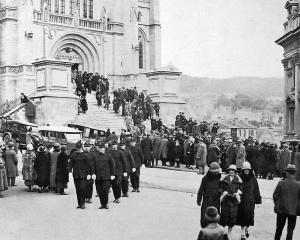
That made the region the first place in New Zealand to reach such stratospheric heights and has left the previously robustly most expensive dwelling place, Auckland, further in its wake.
The average house price in the region is no doubt driven upwards by the sorts of luxury homes seen on television show New Zealand’s Best Homes with Phil Spencer, but realestate.co.nz, which tracks this statistic, has emphasised that this average price is for a "nice" three-bedroom home.
While anyone who has tried to buy in Cromwell, Clyde or Wānaka recently would deny that property there was cheap, realestate.co.nz stressed that the average price reflected the impact on the market created by Queenstown.
Described as an "anomaly", prices in the resort town have resolutely marched ever upwards in the past five years, even while prices in most other regions — notably Auckland — have tracked in the opposite direction.
"It really seems to be a microclimate that is immune to those sort of economic challenges that we’re seeing," a company spokeswoman said.
Although it is an alpine resort, that Queenstown property microclimate must seem more like it is in the depth of the tropics for anyone trying to buy an average-priced house in it.
Nationally the average asking price for residential properties increased 1.1% over the past year, to $862,000. Despite Queenstown’s average asking price being twice that, the sky does not appear to be any limit to how high property values can climb.
The nature of property is that you always have to pay a premium to be in the dress circle, although at Queenstown prices the average person would want plenty of added bonuses to be paying that much.

This is a well-known international phenomenon known as the "Aspen effect", where booming prices in resort towns drive out lower and middle income residents. Queenstown, which has had hospitality workers living in their cars while parked on the streets for some time, has long been aware of the issue, and Wānaka is also feeling its impact.
Hardly a week seems to go by without news of another affordable housing development being proposed for Queenstown but "affordable" is a relative term — being cheerily assured that apartments are available in the resort for less than $1m will offer little comfort to many buyers.
Queenstown Lakes’ previous mayor strove mightily to try to deal with these issues but found himself voted out by frustrated locals.
New mayor John Glover has floated various ideas to address the region’s housing problems, including a Queenstown "infrastructure bond" to attract long-term investors, reconsidering the regional deal proposed between provincial Otago and the government and a possible moratorium on future development until Queenstown’s infrastructure issues are sorted out.
Any or all of the options may have some impact on housing prices, but some balance is needed.
The one thing which could cool down Queenstown’s overheated property market is for the resort to become a less desirable location for people to live in or visit. Holus bolus redevelopment might lower house prices, but overpopulation and further load on already under strain infrastructure may scramble Queenstown’s golden egg.
There was one glimmer of hope for the region in the realestate.co.nz statistics. With an average listing price of $544,739 in Southland and $574,857 in Otago, much of the South can offer house prices which are about $300,000 below the national average.
The economies of both provinces are performing well in excess of other parts of New Zealand in terms of productivity and, notwithstanding the fact that some of our citizens face a daily struggle to get by, the aspiration to own a house remains an attainable goal for many.
That said, the inland region offers much evidence of the problems that housing being unaffordable, and unattainable, can bring.












